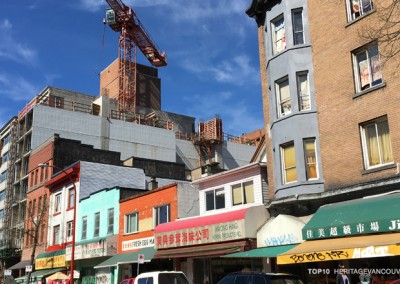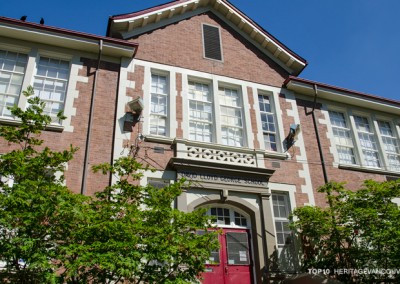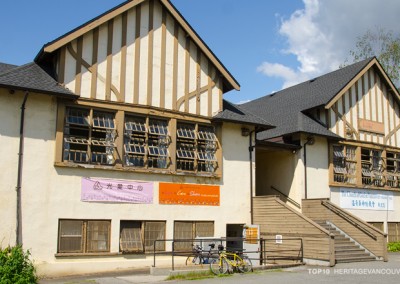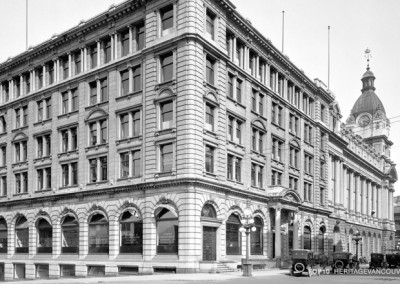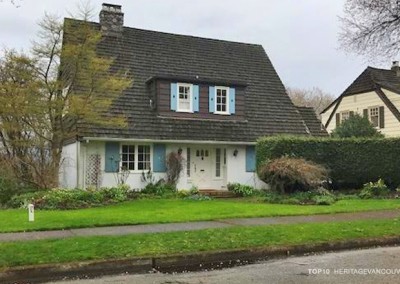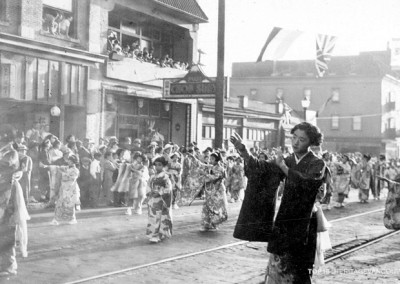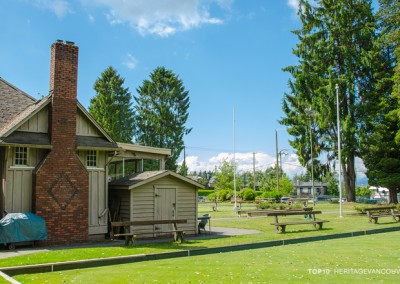Welcome to the 2017 Top10 Watch List
Vancouver is facing a time of change as increasingly communities are considering the future of our historic neighbourhoods, special areas and heritage sites. Identifying and recognizing the diverse cultures that have shaped Vancouver, from Coast Salish people 3,000 years ago, to the arrival of non-indigenous peoples from the 1850’s to the 21st century, is critical in order to move forward in a way that respects and protects built heritage, and ways of life, while allowing change.
As the City celebrates Canada 150 Plus, Heritage Vancouver is highlighting threats to the physical, social and cultural fabric of historic urban landscapes (HULs), special areas and community landmarks, including schools, but also that heritage is an asset that can be integrated with broader planning goals, like livability and affordable housing.
The pressure for new development continues to endanger the authenticity of Chinatown built heritage and the day-to-day culture and rituals of the Chinese-Canadian community, which together is a historic urban landscape. .
Hundreds of pre-1940 character homes that are part of the special character of our historic neighbourhoods (HULs) have been lost again this year including houses that should be listed on the Vancouver Heritage Register, or protected in new heritage conservation areas. The need to expand the City’s ‘character home’ criteria beyond 1940, is illustrated in the risk of demolition of unique housing clusters along streets like Wallace Crescent.
The threat of losing the community value and cultural diversity of neighbourhoods on the west and east side of Vancouver is reflected in plans to add density to the 1970s False Creek South and lack of protection of Powell Street Area (Nihonmachi or ‘Japantown’).
Other features of historic neighbourhoods, and other special areas, that are endangered include community landmarks and schools. For 2017, we have chosen David Lloyd George School, in Marpole, and Simon Fraser Elementary School Annex, in Mount Pleasant, which may be either demolished, or adversely impacted from redevelopment.
The City may support the Federal Government plans to put a massive 22-storey tower on top of the Sinclair Centre and as a result, the National Trust has put this landmark on the 2017 National Endangered Sites List.
Lastly, Celtic Shipyards, which is the last industrial site of its kind, and lawn bowling clubs and greens throughout the city, could be lost as Vancouver grows and changes.
But, there is good news too.
Building on the success of the First Shaughnessy Heritage Conservation Area, the City of Vancouver continues to unveil its Heritage Action Plan, a major initiative to overhaul the aging Heritage Conservation Program.
The Heritage Register Upgrade – after three years of complicated and intense consultation and work – is starting to roll out, and Heritage Vancouver has been a major participant in this discussion through its Shaping Vancouver series as well as ongoing assistance in identifying and researching potential heritage resources. Throughout the Heritage Action Plan process, our society has strongly supported the recognition of a broad range of diverse and inclusive heritage values. We look forward to seeing the latest results of this important and timely project unfold throughout 2017.
Our 2017 Top10 is a snapshot of emerging trends and urban issues. We hope that you join us in Heritage Vancouver’s ongoing conversations about how to conserve heritage in ways that embrace cultural diversity, layers of city building and sustains communities.
We acknowledge the financial assistance of the Province of British Columbia.


